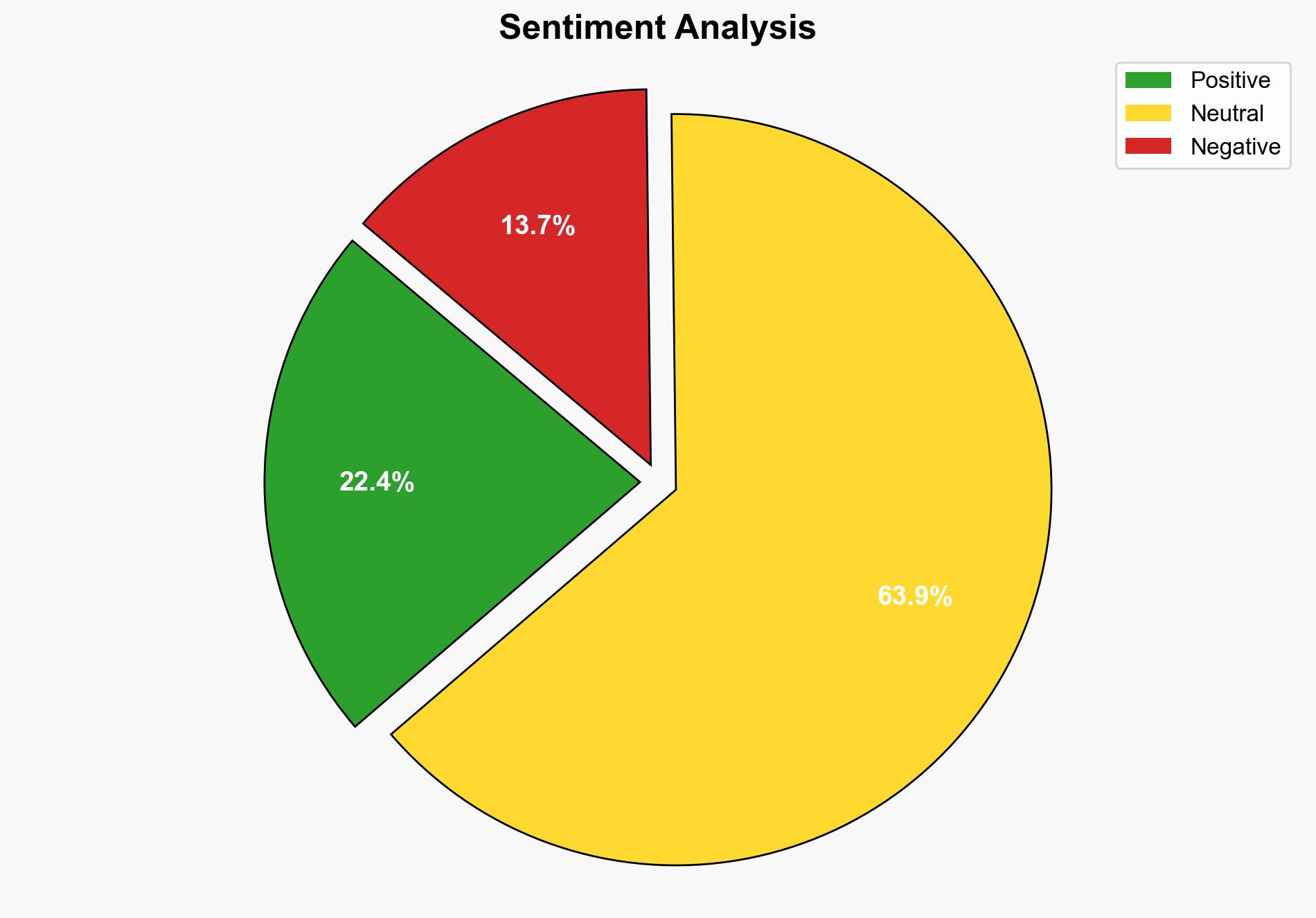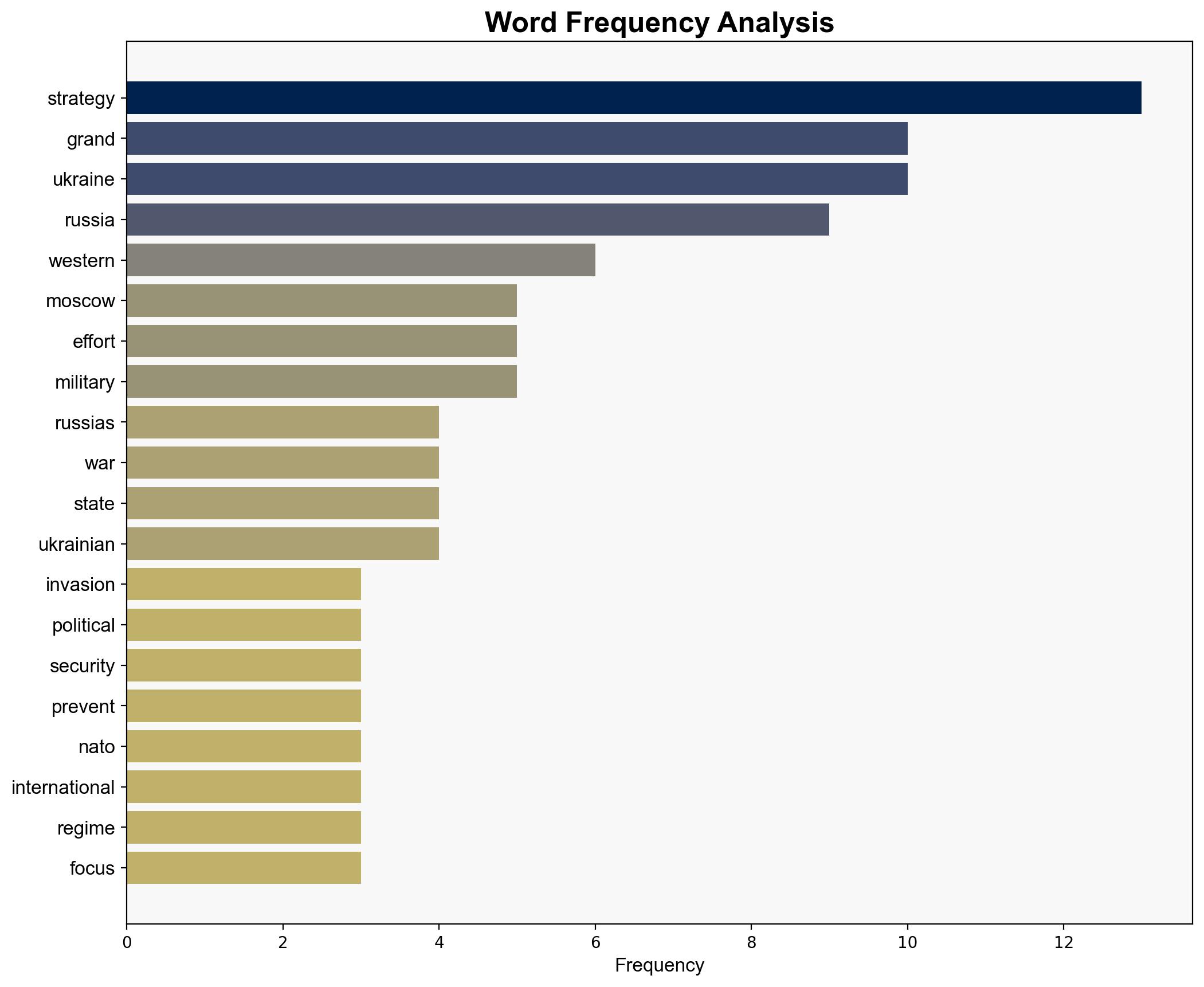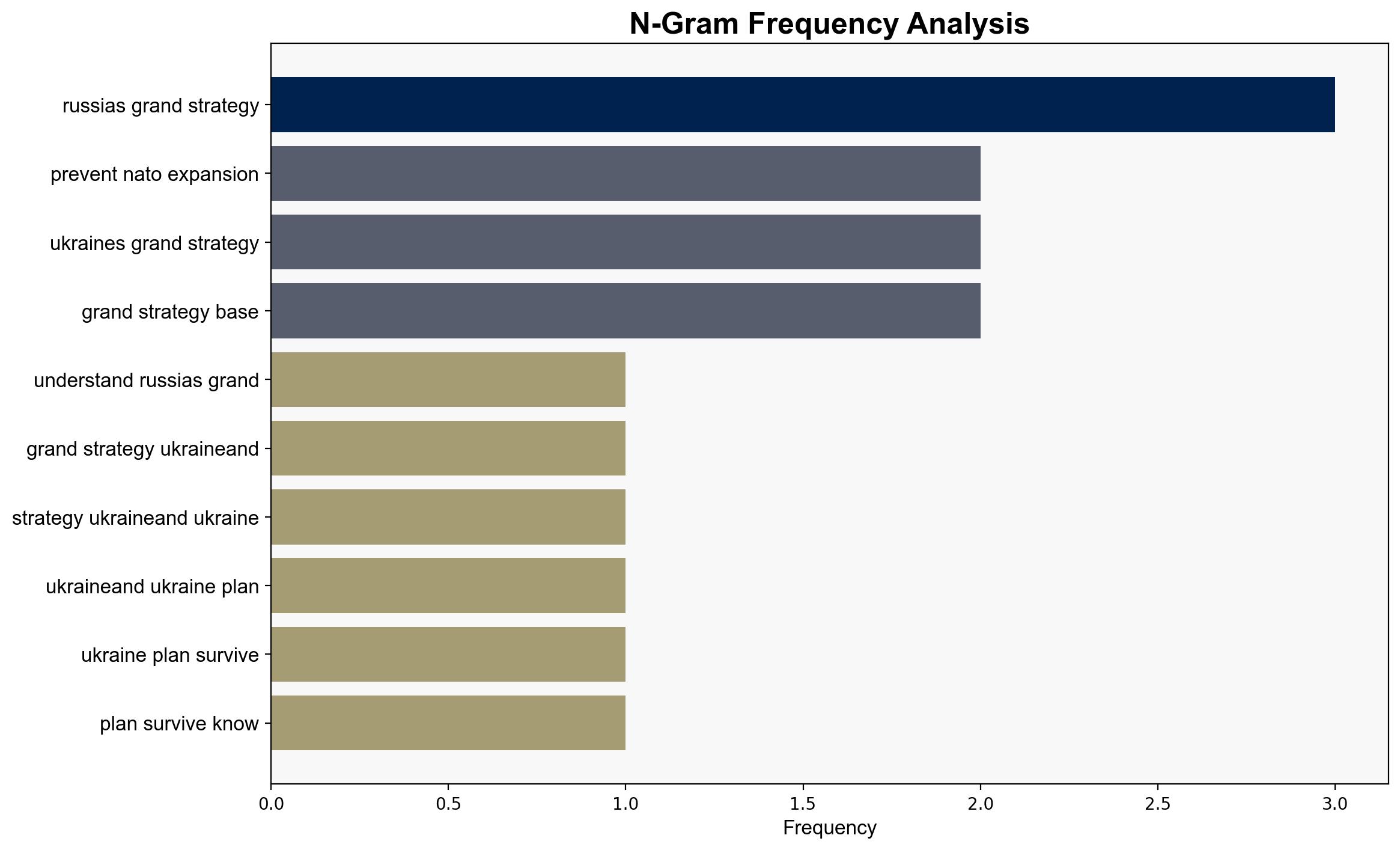Understanding Russias Grand Strategy in Ukraineand Ukraines Plan to Survive – The National Interest
Published on: 2025-07-06
Intelligence Report: Understanding Russia’s Grand Strategy in Ukraine and Ukraine’s Plan to Survive – The National Interest
1. BLUF (Bottom Line Up Front)
Russia’s grand strategy in Ukraine is primarily driven by its desire to reassert regional dominance, prevent NATO expansion, and maintain a strategic buffer zone. Ukraine’s strategy focuses on national defense and survival, leveraging Western support and asymmetric warfare tactics. The conflict’s trajectory suggests a prolonged engagement with significant geopolitical implications.
2. Detailed Analysis
The following structured analytic techniques have been applied to ensure methodological consistency:
Cognitive Bias Stress Test
Potential biases were identified and addressed through red teaming exercises, ensuring a balanced assessment of both Russian and Ukrainian strategies.
Bayesian Scenario Modeling
Probabilistic forecasting indicates a high likelihood of continued conflict, with potential escalations contingent on external support and internal political dynamics.
Network Influence Mapping
Key relationships between Russia, Ukraine, and allied states were mapped, highlighting Russia’s reliance on energy leverage and Ukraine’s dependence on Western military aid.
3. Implications and Strategic Risks
The ongoing conflict poses significant risks, including regional instability, economic disruptions, and potential cyber threats. Russia’s military and economic strategies could further strain Western alliances, while Ukraine’s reliance on external support may lead to vulnerabilities if aid diminishes.
4. Recommendations and Outlook
- Enhance diplomatic efforts to mediate conflict resolution and prevent further escalation.
- Strengthen cybersecurity measures to protect critical infrastructure from potential attacks.
- Scenario-based projections:
- Best Case: Diplomatic resolution leads to de-escalation and stabilization.
- Worst Case: Escalation into broader regional conflict involving NATO.
- Most Likely: Prolonged conflict with intermittent escalations.
5. Key Individuals and Entities
Vladimir Putin, Volodymyr Zelenskyy, Harrison Kass
6. Thematic Tags
national security threats, geopolitical strategy, regional stability, military conflict




